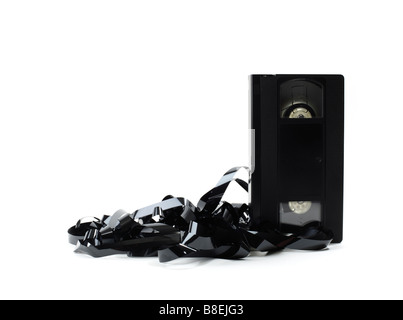

A VHS tape can also be recorded onto up to 100 times. A VHS tape can be recorded for a maximum of two hours. VHS tapes with higher quality and those stored in climate-controlled environments have a slightly longer lifespan. Typically, over the course of 10 to 25 years, VHS degrades by 10–20%. How long do VHS tapes last? The lifespan of each individual VHS tape varies. See also Why is a parsec 3.26 light-years? How long before VHS tapes deteriorate? A tape’s deterioration will start to take hold after extended exposure to a hot, humid environment. In fact, as long as it’s only temporary, videotapes can be safely stored in a warm environment. Therefore, it would be preferable to convert the recorded content on your old VHS tape to a digital format in order to preserve it for as long as possible.Although they are an outdated form of media, VHS tapes are still surprisingly durable when exposed to the elements. If you still have a collection of videos from the 1990s, some of the content will undoubtedly have degraded over the years.You should be aware that VHS tape can degrade over time, even if you have a VHS player handy to watch them. Tapes kept in a climate-controlled environment have a much longer shelf life than those kept improperly.

According to studies, even well-stored tapes you’ve only watched once will suffer up to 20% signal loss over a ten to twenty-five-year period.VHS tapes have a lifespan of 10 to 25 years. Films on VHS don’t have a set shelf life, but it’s obvious that they won’t last forever. That’s why malfunctions on old VHS tapes are unavoidable after a while. Overusing something can result in scratches and technical issues, while neglecting it will result in mold and dirt. VHS tapes deteriorate over time due to excessive or infrequent use. A VHS tape can be made to have sound, but how?.Lastly replace the front cover of the cassette and fasten in the screws. You may have to twist the white reel clockwise so the teeth slip properly into place. The above picture shows how the tape should look between the rollers.įinally you will be able to replace the white reel into its slot. It’s not a problem if it drops out just fiddly to put back in place. If you don’t have a steady hand, you can gently hold this with your finger tip as you thread the remaining tape around the guide rollers. The clear plastic dust protector can cause issues at this point. The shoulder roller will have the tape going on the outside. Starting with the heavier side first, thread the tape through the roller guides in an under/over fashion. Having the the reels taped back together, it’s time to place the reels back into the cassette case. In other words, tape it together knowing the white cog section will be along the bottom of the cassette. One thing to point out is to remember the direction the tape will be going. Next we are going to simply tape the take up slack onto the reel. Gently take out the reels, avoiding to slip out any plastic pieces along the way. It’s like a dust protector and can slip out very easily. Some brands of VHS-C tapes have this, others don’t.


Notice on the right hand side a piece of clear plastic? It will be just a matter of splicing the clear take up slack onto the the other reel.Ĭhecking the other side shows no rollers or pieces have gone astray. Having the cover off, we can assess how the tape has snapped.Īll of the tape is safe on the main reel. The same steps will apply as written earlier when taking the front cover off the cassette. So do have some patience if you encounter troubles trying to unscrew them. There are some (like JVC brands) that make the screw heads so ridiculously small. Locate the screws that need to be opened. Taking a look at a different problem that commonly occurs with VHS-C tapes – when a tape is rewound to the start and simply snaps at the reel. Place the top back on and check that there is no gaps showing.įinally replace the screws and tighten them in. Make sure to place the tape around the shoulder guides as shown in the above picture.Īlong the left hand side, make sure the tape is around the shoulder roller.Ī front view shows how the tape looks when tightened by turning the reels. Having the heavier side go in first makes the remaining tasks easier (for me at least). I usually begin by pacing the side that has more cassette tape in first. Once the cassette has been trimmed and taped, it’s time to place the reels back.


 0 kommentar(er)
0 kommentar(er)
